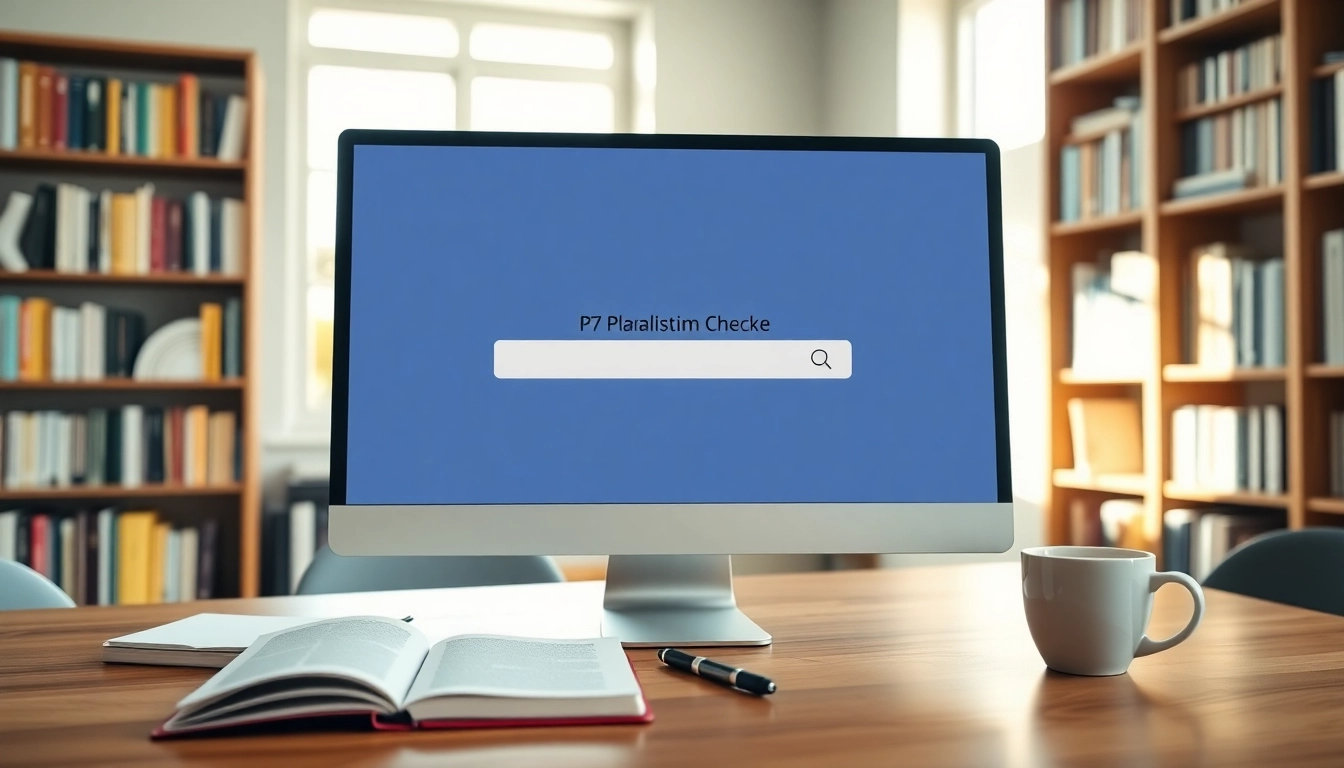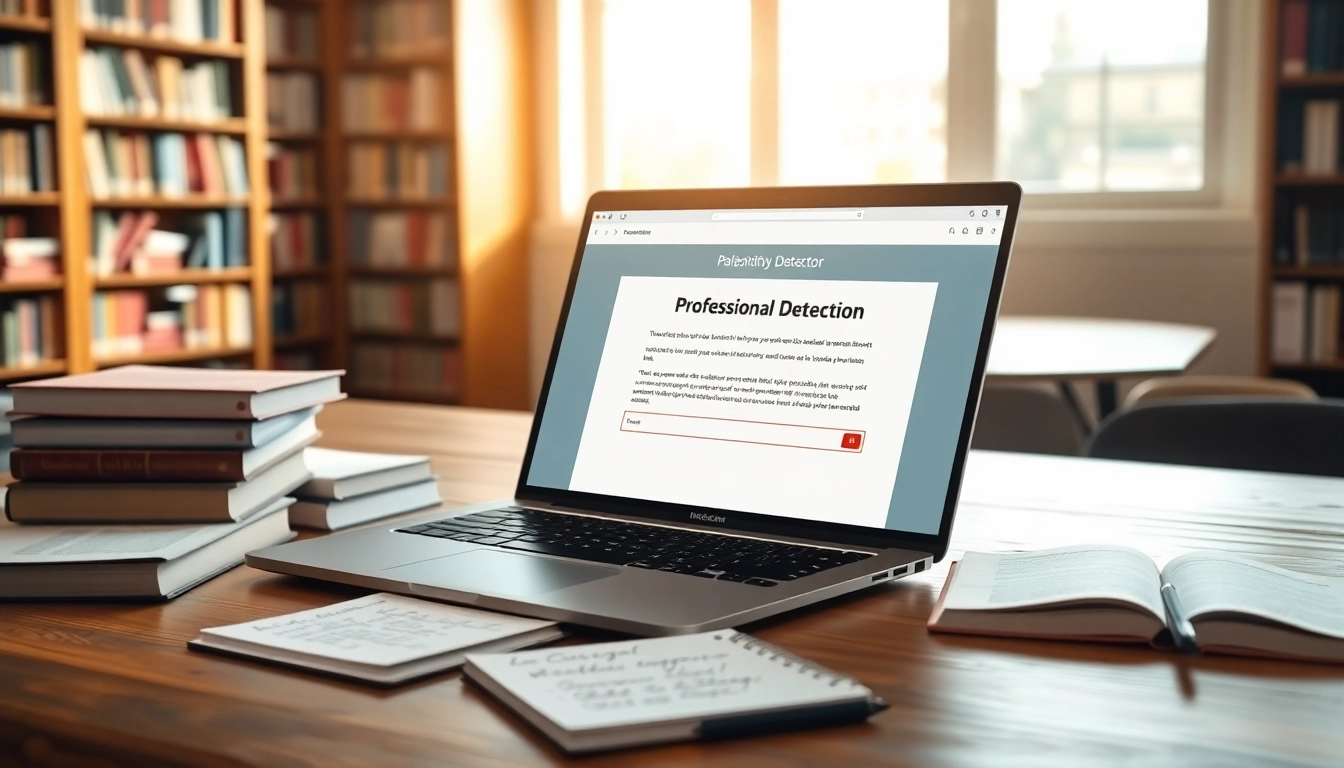Understanding Plagiarism and Its Consequences
Plagiarism is a serious issue in academic and professional writing that can undermine a person’s credibility and academic integrity. Whether it’s intentional or unintentional, the act of presenting someone else’s work or ideas as one’s own can have significant repercussions. This article delves into the definition of plagiarism, its implications, and the various types prevalent in writing today.
Defining Plagiarism
At its core, plagiarism involves the use of another person’s work—be it their words, ideas, or research outcomes—without appropriate attribution. This can occur in numerous forms, such as copying text directly, paraphrasing someone’s ideas without acknowledgment, or submitting another’s work as your own. According to the plagiarism checker resources, understanding what constitutes plagiarism is crucial for both students and professionals alike.
The Importance of Originality in Academic Work
Originality is a fundamental principle in academia. Not only does it foster intellectual growth, but it also upholds the integrity of research and scholarly communication. Academic institutions are increasingly emphasizing the importance of originality, as it reflects a scholar’s commitment to their field. The credibility of academic endeavors heavily relies on originality, and breaches can lead to severe penalties, including expulsion, denial of degrees, and damaged reputations.
Common Types of Plagiarism
Plagiarism can take on various forms, and it’s essential to understand these distinctions:
- Direct Plagiarism: Copying text word-for-word without quotation or citation.
- Self-Plagiarism: Reusing one’s previously published work without acknowledgment.
- Patchwriting: Paraphrasing that closely mirrors the original text while failing to cite it appropriately.
- Accidental Plagiarism: Unintentional failure to cite sources correctly or misunderstanding citation guidelines.
Features of Effective Plagiarism Checkers
Choosing the right plagiarism checker can significantly impact your writing quality and originality. An effective tool must possess a range of characteristics that support users in their quest for plagiarism-free content.
Real-time Detection and Reporting
One of the hallmarks of a good plagiarism checker is its ability to provide real-time analysis. This feature allows writers to receive immediate feedback on their work, identifying potentially plagiarized content before submission. Such tools often generate reports outlining similarities between the submitted text and existing literature, making it easy for users to address any issues promptly.
Compatibility with Various Document Formats
Effective plagiarism checkers should support a variety of file formats, including Word documents, PDFs, and plain text files. This compatibility ensures that users can analyze their work regardless of how it’s formatted, providing versatility for different writing formats and styles.
Integration with Writing Tools
Integrating plagiarism checkers with popular writing tools or platforms enhances usability. Whether embedded in word processors, content management systems, or educational platforms, such integration streamlines the checking process, allowing users to cross-reference their writings seamlessly without interrupting their flow.
How to Choose the Right Plagiarism Checker
Selecting the best plagiarism checker requires careful consideration of various factors. The vast array of options available can make this decision daunting.
Evaluating Free vs. Paid Options
While there are numerous free plagiarism checkers available, they often come with limitations in terms of features and accuracy. Paid versions usually offer more comprehensive analysis tools, including advanced reporting, higher accuracy, and sometimes integration with other writing aids. Users should weigh their needs and budget to find the most suitable option.
User Reviews and Ratings Comparison
Before finalizing a choice, it’s advisable to review user feedback across platforms. Evaluating ratings and reviews provides insight into the tool’s effectiveness, user interface experience, and customer support options. Higher-rated options often correlate with better functionality and user satisfaction.
Assessing Accuracy and Speed
Accuracy in detecting instances of plagiarism is crucial. Users should look for tools that utilize extensive databases for comparison and claim high accuracy rates. Additionally, testing the speed of the tool during the checking process can determine if it aligns with the user’s expectations, especially under time constraints.
Best Practices for Avoiding Plagiarism
While technology can help detect instances of plagiarism, the best course of action is prevention. Here are several best practices for maintaining originality in your work.
Effective Research and Note-Taking Methods
Effective research strategies include keeping detailed notes and documenting sources meticulously. Encourage the use of annotated bibliographies and specific reference management tools. This proactive approach allows writers to easily keep track of where ideas originated and how they were adapted in their own work.
Proper Citation Techniques
Understanding proper citation techniques, including MLA, APA, and Chicago styles, is paramount. These guidelines help you accurately attribute ideas to their original authors and avoid unintentional plagiarism. Investing time in mastering citation practices pays off in maintaining academic integrity.
Using Paraphrasing Tools Wisely
Paraphrasing tools can be helpful for generating original content from existing sources. However, they should not be relied upon exclusively. Always review and revise the output to ensure it reflects your voice and understanding of the material, as well as proper attribution to the original author when paraphrased.
Case Studies: Success Stories with Plagiarism Checkers
Understanding the effectiveness of plagiarism checkers through case studies provides a real-world context demonstrating their value across different demographics.
Students Improving Their Grades
A survey conducted among university students showed a significant improvement in grades after using plagiarism checkers during their writing process. Many reported increased confidence in submitting their work, as the tools highlighted potential issues and provided a roadmap for revisions that led to original outputs.
Institutions Reducing Academic Dishonesty
Several universities have integrated plagiarism detection software into their educational platforms. These institutions observed a decrease in cases of academic dishonesty, as students became more aware of the implications of plagiarism and sought to ensure their work was original.
Writers Enhancing Content Credibility
Freelance writers and content creators have reported enhanced credibility and client trust when utilizing plagiarism checkers prior to submission. These tools help them ensure the uniqueness of their content, which in turn secures repeat business and fosters long-term professional relationships.



